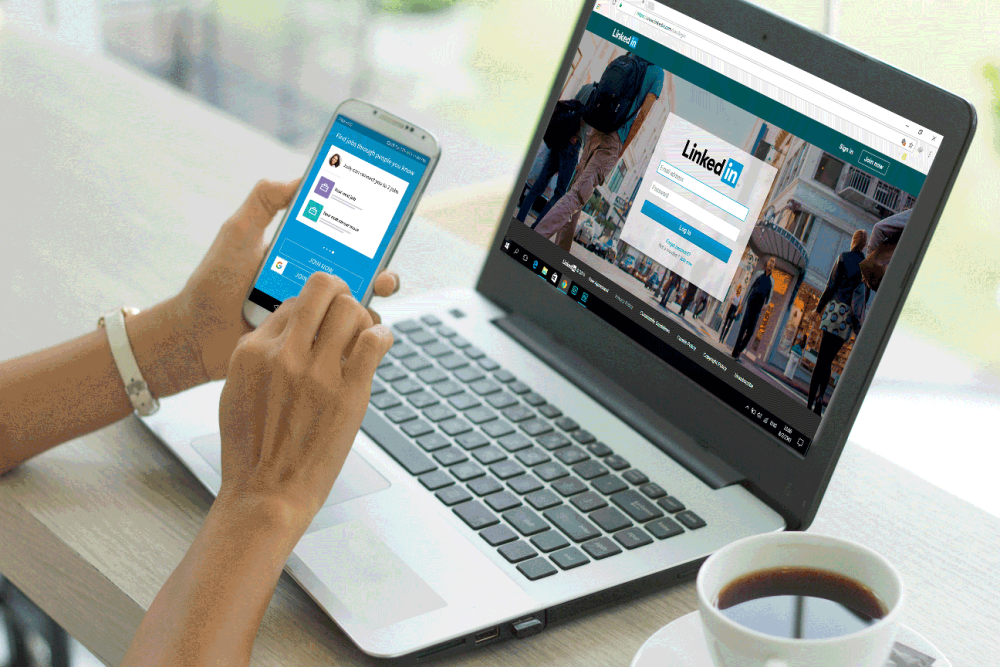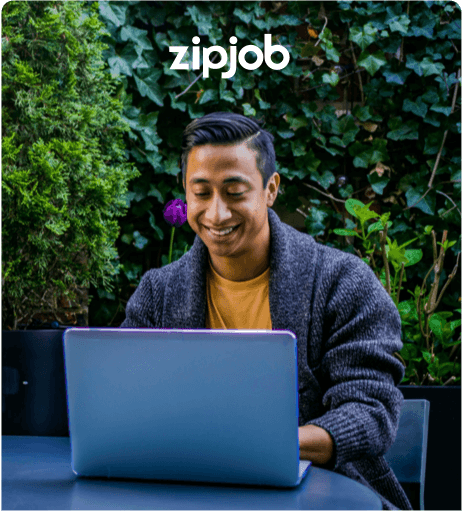How to Write LinkedIn Work Experience Section (Examples & Tips)

12 min read

LinkedIn is one of the most useful sites for finding a job and building your network.
If you are not using this powerful social media network, you are missing a tick. Most hiring managers and recruiters use LinkedIn to find qualified candidates. These professionals may also view candidates' LinkedIn profiles before inviting them for a job interview.
With that in mind, it's important to have a LinkedIn profile that is polished and up-to-date.
Your work experience section will make up the bulk of your LinkedIn profile. This is where you share your employment history. Get it right, and you might just wow a hiring manager.
So, how do you get started on this feat? Luckily, you’ve come to the right place.
At ZipJob, we want to help you unleash your inner potential and reach your career goals. This article will focus on how to write your LinkedIn work experience section. We've also included some examples and our top tips to catch the attention of a hiring manager.
Finally, we share a formula for taking the work experience listed on your resume and making it suitable for your LinkedIn profile. Read on and learn all that you need to know about optimizing this section now.
How your LinkedIn experience section differs from your resume
First on the agenda: how your LinkedIn is different from your resume. The truth of the matter is that many candidates have no idea how to answer this question.
So, should you copy the work experience section from your resume and paste it into your LinkedIn profile? The short answer is no. But wait for it, we’re going to explain exactly why.
As we cover in-depth on this post, your LinkedIn profile and your resume need to be different because they serve different purposes. Your resume is tailored to a specific job, while your LinkedIn expands upon your resume for a general job search. Both documents should have the same job titles, date ranges, and basic information regarding each job. However, you need to present the information in different ways, though.
The reason is simple. When a hiring manager looks at your resume, they already know that you are interested in the job at hand. You have sent them the document with the express purpose of applying for the role. As such, you should have tailored it to meet their needs. Everything from the words that you use to what you include should speak to them. If you fall at this first hurdle, you will be unlikely to get invited to that all-important interview later on.
On the other hand, your LinkedIn profile is a more general overview of your professional history. You will use it as a marketing tool when you are networking and looking for work. However, and this part is important, it is not tailored to a specific vacancy.
For that reason, you don’t need to worry about using the exact same terminology. You can also give a less specific overview of the work that you do and what that entails. In doing so, you give readers an idea of what your skills and expertise are at a glance at your LinkedIn experience section.
Key Takeaway
Your LinkedIn profile should be used to complement your resume, providing a more expansive look at your qualifications and who you are as a person!
Writing your LinkedIn experience section
Your resume should contain detailed descriptions of your work experience that are relevant to the position you're applying for. However, there is no need to include all of those details on your LinkedIn profile. When considering how to write a LinkedIn work experience section, you can be more general in your approach. Confused? Let’s break that down.
Leave the minor details out
When writing about a specific role, you can give broad brush strokes of what you did. Rather than going into extra detail about what you brought to the table, keep things brief. One of the most important things here is that your LinkedIn experience section is skimmable. That means that a hiring manager should be able to look at it and quickly gain all of the details they need.
Add in a lot of experience!
You don't need to include as many details, but you can include more experiences. Your resume needs to include only relevant experience, but your LinkedIn can highlight additional professional experiences, responsibilities, and accomplishments from your most recent 10 to 15 years.
For example, if you have been doing freelance work on your resume that doesn't fit in with your day job, you may want to include it on your LinkedIn.
Use a conversational tone
There's a difference in perspective while writing a resume versus a LinkedIn profile. Your resume should avoid pronouns (I, we, she, our, them) but your LinkedIn should be written in the first person with a conversational tone.
Using a conversational tone is important in your summary ‘About’ section as well as your LinkedIn experience section.
How to add new work experience on LinkedIn
Ready to add roles to your LinkedIn page? Okay. Let’s get started.
To add a new job to your LinkedIn profile, click on the "+" symbol at the top of your LinkedIn experience section.
Fill in your job title, company, location, and dates of employment. LinkedIn recently added an "employment type" menu, so you can specify if you were a full-time employee or not.
In the same box, you can detail your description of that experience. You're going to want to include keywords like your resume that are specific to your industry and career goals.
Unlike a resume, your LinkedIn work experience entries should be general, less detailed, and not tailored for a certain position.
Your LinkedIn experience section should start with a written summary of your achievements specific to each role. Bullet points are great for a resume because they contain a lot more information without huge blocks of text. However, paragraph form is acceptable on LinkedIn because you won't be including a ton of information.
Here is an example of what that looks like after you click save:

LinkedIn experience section versus resume experience
By this point, you should have a fairly decent idea of how to write a LinkedIn work experience section. However, if you are still unclear on how this differentiates from your resume, we have the answers.
Let's take a look at an example of a resume work experience section, and how it translates to the work experience section of your LinkedIn profile.
Example of a resume experience section:
Director of Sales, Southwest Region - Chase | Los Angeles, CA
Led a team of two account executives and managed a portfolio of 50+ clients and agencies that consisted of Fortune 500 companies from a wide range of industries including Entertainment, Auto, Technology, Fashion, Technology, and Travel.
Launched the company’s first app download campaign with a re-targeting strategy resulting in a two-day $500K package.
Managed risk by partnering with clients and other stakeholders for a seamless campaign launch.
Achieved sales pacing of 70% for the year a 150% year-over-year increase in annual revenue to $7.5M.
Built relationships to foster better communication between the sales and operations teams, including weekly calls to collaborate on campaigns that resulted in a 33% increase in performance.
Streamlined client communication to be more responsive and timeline management that increased staff productivity.
As you can see from the above, you can use bullet points to cram a lot of important information onto the page, including some vital details about the business to help inform the hiring manager when they read the resume. Making sure that this all fits onto one or two pages can be a tall order. However, this format helps get the job done well.
Keeping in mind our tips from above, here is how that same information would look on your LinkedIn experience section:
Example of a LinkedIn experience section:
I led a team of 2 that managed a 50+ client portfolio. Together, we launched the firm’s first app download campaign while partnering with stakeholders to minimize risk and streamline client communication. The work we did resulted in a 150% increase in annual revenue and boosted team performance by 33%.
Can you spot the differences?
Your LinkedIn experience section doesn't need to be as detailed as your resume. It should instead be a summary that highlights your main achievements. However, there are elements of crossover between these two sections. Take the time to study our examples and see the main differences as they are outlined above.
Formula for changing your resume work experience for LinkedIn
Let’s say that you already have a resume but you want to populate your LinkedIn page. Okay, we have you covered here. You don’t need to be a genius to switch things around and write a LinkedIn experience section that turns heads. In fact, it’s as simple as a three-step formula.
Follow these steps to convert work experience from your resume to your LinkedIn profile:
Step 1: Copy the information
First things first, you’re going to want to use the existing information you have. Chances are, you spent a long time working on your resume work experience. Don’t allow that energy to go to waste. Instead, you can work with what you already have.
Start by copying the work experience from your resume over to your LinkedIn profile. You should then break it up by company or position.
Expert Tip
Don’t rush the process!
You may be tempted to rush through the process of including your jobs on your profile. That is a mistake.
The truth of the matter is that it’s all too easy to make silly errors. Whether you confuse the dates, add in typos, or miss out on important details, these slip-ups can cost you big time down the line. For that reason, you 100% need to take your time.
Pay full attention when you are copying the information over to the social media site. You need to make sure that you include all of the relevant details in the right places. Once you have finished this essential step, go back and make sure that everything is correct.
Step 2: Reformat
Next up, remove the bullet points. You will have a solid paragraph of text. Of course, this amount of writing will look overwhelming to any reader. So, you need to edit it down.
Select your major achievements – quantifiable if possible – and remove the rest of the content. That may mean making some tough decisions. Consider which of your accolades are likely to be the most impressive to your professional network and take it from there.
HINT: Put the most important information in the first four lines. LinkedIn cuts off paragraphs after these lines. So, unless the reader clicks to expand on the information, it’s all they will see. Make sure that you lead with your most awe-inspiring feats to win the reader over.
Step 3: Engage your reader
The final step is editing your content. Don’t forget that LinkedIn is a social media platform. You can leave that tired, stuffy language at the door. Instead, work on enticing your reader by using engaging words and exciting sentences. The aim of the game is to ensure that they want to read on when they first click on your profile. Don’t miss out on this opportunity.
The golden rule is that you should make your content conversational and captivating. Don’t forget that it's okay to say "I did XYZ '' when you’re writing your profile. Switching to the first-person perspective might take some rewriting, but nailing the tone is worth it!
Writing tips for your LinkedIn experience section
If you’ve read all of the above, you should feel prepared to start writing your LinkedIn work experience section. However, before you unlock your inner Shakespeare, there are a few last things you should keep in mind. Here are three writing tips you need to use:
Get in the reader’s mind first
When someone reads your LinkedIn profile, they want to get a sense of who you are – in a professional sense. Don’t leave them wanting to know more. You can add a splash of your own personality into the content of your work experience section. Be selective when it comes to the language you use and opt for a tone that’s akin to your natural speech. You might be surprised what a difference it makes when you start considering the reader as you write.
Avoid repetition (when possible!)
Okay, so you’ve always worked in the same sector. That means that your work experience is likely to be similar from role to role. However, readers don’t want to see 5-10 duplicates of the same job description on your profile.
Try to avoid repetition wherever possible.
Think about what has made each of your former positions unique and what you learned. By highlighting how each job was unique, you give the reader a better view of your experience.
Always proofread your content
Finally, and we cannot stress this enough, you need to proofread your content. Your LinkedIn profile is your professional calling card. Everyone – from your coworkers to potential employers – may decide to look at it from time to time. When they do so, they will judge you by what you have written on your profile, whether it’s good or bad.
Should you have a profile that is littered with spelling mistakes, it will show them that you have zero attention to detail. That is not the kind of reputation you want out there. Make sure that you read your LinkedIn experience section and the rest of your profile thoroughly before saving it. You can also use Grammarly or any other spell-checker software to ensure that there are no typos.
LinkedIn complements resume
Ready to get editing? Your LinkedIn experience section should both complement and support your resume. Whittle it down to the most important achievements with general keywords from your industry. It’s vital that you keep it conversational and up-to-date.
With a little effort, you can optimize your resume's content to work for your LinkedIn profile, too. Remember that these two materials need to work in tandem to promote you and your professional prowess. When you have completed one, check that it aligns with the other. As we have noted, hiring managers will likely look at both when considering your application.
Looking to take the next step on the career ladder? If so, you can check out our free resume review now and get the insights that you need. Should you want to get ahead of the competition and gain more from your professional life, it is the only way to go.
Recommended reading:

Written by
Charlotte Grainger, Editor & Content Writer, Charlotte Grainger, Editor & Content Writer
Charlotte Grainger is a freelance writer living and working in Sheffield, UK. She has a passion for career development and loves sharing tips and advice. Follow her on Twitter
